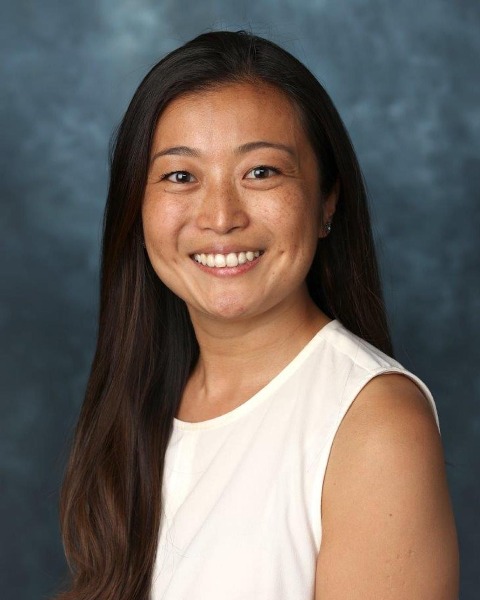Health Equity/Social Determinants of Health
Category: Abstract Submission
Health Equity/Social Determinants of Health V
175 - Racial and Language Barriers and the Medical Home for Asian American and Pacific Islander Children
Monday, April 25, 2022
3:30 PM - 6:00 PM US MT
Poster Number: 175
Publication Number: 175.412
Publication Number: 175.412
Yuri Takabatake, Ann & Robert H. Lurie Children's Hospital of Chicago, Chicago, IL, United States; Kristin Kan, Ann & Robert H. Lurie Children's Hospital of Chicago, Chicago, IL, United States; Jennifer Kusma, Ann & Robert H. Lurie Children's Hospital of Chicago, Chicago, IL, United States

Yuri Takabatake, MD
Resident Physician
Ann & Robert H. Lurie Children's Hospital of Chicago
Chicago, Illinois, United States
Presenting Author(s)
Background: While the medical home aims to reduce healthcare disparities, children of racial and ethnic minority populations experience low quality care and difficulty accessing a medical home. Language barriers have also been shown to result in a higher risk of adverse health outcomes. Children of Asian American and Pacific Islander (AAPI) descent are at risk of both language barriers and racial/ethnic factors that may diminish the medical home experience.
Objective: To study the association between race, primary household language, and the medical home experience, comparing AAPI and White children.
Design/Methods: Merging five years of cross-sectional data from the National Survey of Children’s Health (NSCH) from 2016-2020 (age 0-17 years), we estimated the odds of having a medical home between White and AAPI children and English and Non-English primary language households, and performed a stratified analysis by household language comparing AAPI and White children. The medical home variable included five components: having a personal doctor/nurse, usual place for sick care, family centered care, getting referrals, and receipt of care coordination. Bivariate and multivariate logistic regression were performed with applied survey weights. Covariates included household generation defined using US Census Bureau, health insurance type, and highest level of parent education.
Results: Overall, 15% of children lived in non-English primary language homes, in contrast to 46% of AAPI (Table 1). In adjusted models, AAPI children had significantly lower odds of having a medical home compared to White children, and non-English households did not have significantly lower odds of having a medical home (Table 2). When examining medical home components, AAPI children had lower odds of having a personal doctor/nurse, usual sick care, family-centered care, and care coordination (Table 2). When stratifying by household language, AAPI children had lower odds of having a medical home in both household types when compared to White children (Table 3).Conclusion(s): The findings suggest that AAPI children continue to be disadvantaged in their medical home experience, but primary household language is not a significant factor in this inequity. More research must be dedicated to improving the AAPI experience in healthcare and addressing disparities in care caused by language barriers.
Yuri Takabatake CVResidency CV PAS.pdf
Adjusted Analysis for Medical Home and Components.png)
Objective: To study the association between race, primary household language, and the medical home experience, comparing AAPI and White children.
Design/Methods: Merging five years of cross-sectional data from the National Survey of Children’s Health (NSCH) from 2016-2020 (age 0-17 years), we estimated the odds of having a medical home between White and AAPI children and English and Non-English primary language households, and performed a stratified analysis by household language comparing AAPI and White children. The medical home variable included five components: having a personal doctor/nurse, usual place for sick care, family centered care, getting referrals, and receipt of care coordination. Bivariate and multivariate logistic regression were performed with applied survey weights. Covariates included household generation defined using US Census Bureau, health insurance type, and highest level of parent education.
Results: Overall, 15% of children lived in non-English primary language homes, in contrast to 46% of AAPI (Table 1). In adjusted models, AAPI children had significantly lower odds of having a medical home compared to White children, and non-English households did not have significantly lower odds of having a medical home (Table 2). When examining medical home components, AAPI children had lower odds of having a personal doctor/nurse, usual sick care, family-centered care, and care coordination (Table 2). When stratifying by household language, AAPI children had lower odds of having a medical home in both household types when compared to White children (Table 3).Conclusion(s): The findings suggest that AAPI children continue to be disadvantaged in their medical home experience, but primary household language is not a significant factor in this inequity. More research must be dedicated to improving the AAPI experience in healthcare and addressing disparities in care caused by language barriers.
Yuri Takabatake CVResidency CV PAS.pdf
Adjusted Analysis for Medical Home and Components
.png)
